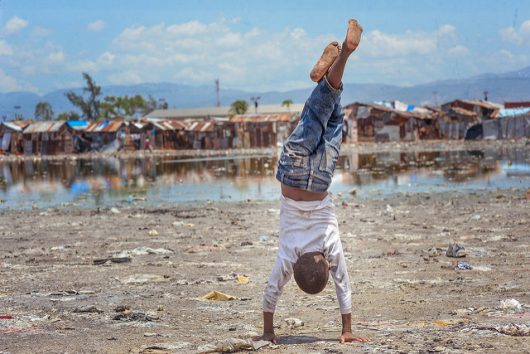Top Diseases in Haiti

Before the devastating 2010 earthquake in Haiti, 80% of Haitians already lived below the poverty line, and 54% of the natives lived in poverty. Already an economically struggling country, the earthquake shattered what little financial support it had by creating $8.5 billion in destruction. According to the Inter-American Development Bank, Haiti’s gross domestic product decreased to 5.1% and destroyed 106,000 homes while damaging another 188,383 homes.
While the effects of the earthquake still linger, diseases in Haiti are still one of the most prominent causes of death in the nation. Tuberculosis has proven to be one of the most detrimental diseases in Haiti, with two million people dying each year due to the disease, and another 8.4 million contracting the disease. USAID notes that Haiti is among the highest per capita recipients of tuberculosis in the Latin America and Caribbean region, and has become one of the most infectious causes of mortality in both children and young adults with a recorded 6,814 deaths in 2007. EMBO reports that fewer than half of the tuberculosis cases are diagnosed, and of those diagnosed, only 30% have access to treatable care.
USAID notes that Haiti is among the highest per capita recipients of tuberculosis in the Latin America and Caribbean region, and has become one of the most infectious causes of mortality in both children and young adults with a recorded 6,814 deaths in 2007. The European Molecular Biology Organisation (EMBO) reports that fewer than half of the tuberculosis cases are diagnosed, and of those diagnosed, only 30% have access to treatable care. EMBO suggests that the rate of tuberculosis in Haiti is largely in part of the expansion of the HIV/AIDS pandemic. HIV/AIDS has also been one of the deadly diseases in Haiti, proving to be the cause of death for three million residents of Haiti per year. Of those who are diagnosed with HIV/Aids, one-third died of tuberculosis.
EMBO suggests that the rate of tuberculosis in Haiti is largely in part of the expansion of the HIV/AIDS pandemic. HIV/AIDS has also been one of the deadly diseases in Haiti, proving to be the cause of death for three million residents of Haiti per year. Of those who are diagnosed with HIV/Aids, one-third died of tuberculosis.
Diseases in Haiti are also highly contracted from mosquito bites that in turn become vector-borne diseases. One of the most common vector-borne diseases is malaria, which impacts 1,278 residents out every 100,000 people annually. Another disease in Haiti that is notably less common is Chikungunya. The virus transmission was first reported in Haiti in May 2014, and infects 627 Haitians per 100,000. Cholera is the last example of vector-borne diseases in Haiti. It severely broke out following the earthquake in 2010, causing 700,000 cases of illness and 8,500 deaths last year. In 2014, 27,750 residents of Haiti reported having cholera, 296 deaths resulted from the disease.
Cholera is the last example of vector-borne diseases in Haiti. It severely broke out following the earthquake in 2010, causing 700,000 cases of illness and 8,500 deaths last year. In 2014, 27,750 residents of Haiti reported having cholera, 296 deaths resulted from the disease.
There are strong efforts to reduce diseases in Haiti through a variety of health programs. One of the health programs in Haiti is Partners in Health, an affiliate of Harvard Medical School and Brigham and Women’s Hospital in Boston. Partners in Health has made significant strides in integrating a “four pillars of health” system. This includes voluntary HIV counseling and testing in primary healthcare, maternal health services and tuberculosis diagnosis and treatment while providing healthcare from a humans rights approach and using paid community health workers to accompany patients with their chronic disease.
The work of Partners for Health has made a drastic and positive impact on HIV/AIDS prevention. Through the Partners for Health, a survey conducted off treatment approaches proved that 59 of 60 patients responded favorably to the treatment, providing hope for the future.
Overall, diseases in Haiti are still very prominent and remain a global issue for humanitarians. That said, programs such as Partners for Health are making a tremendous effort in reducing the rise of diseases in Haiti.
– Patrick Greeley
Photo: Flickr
